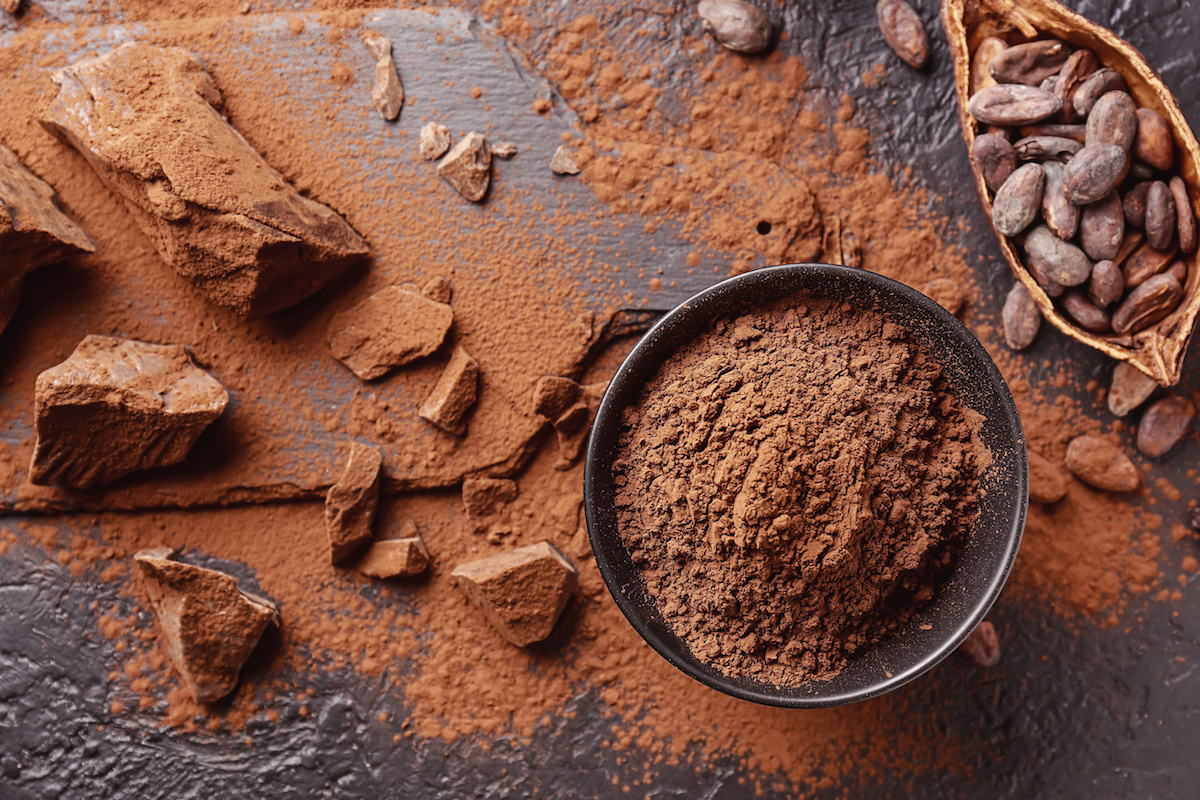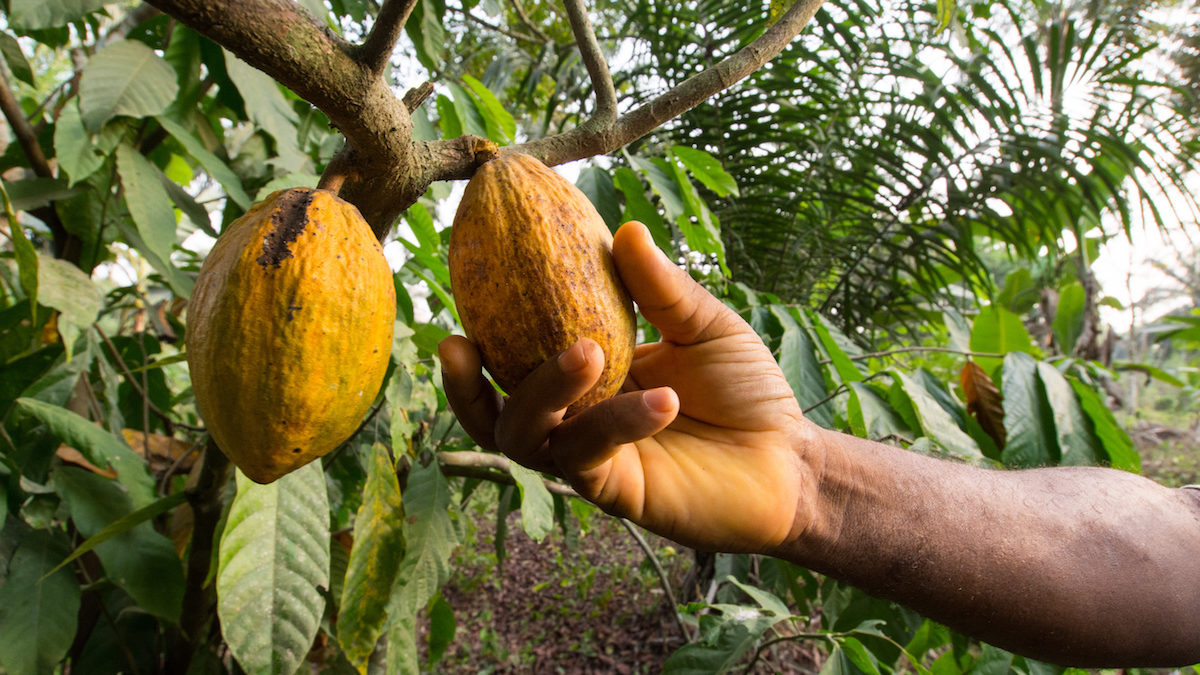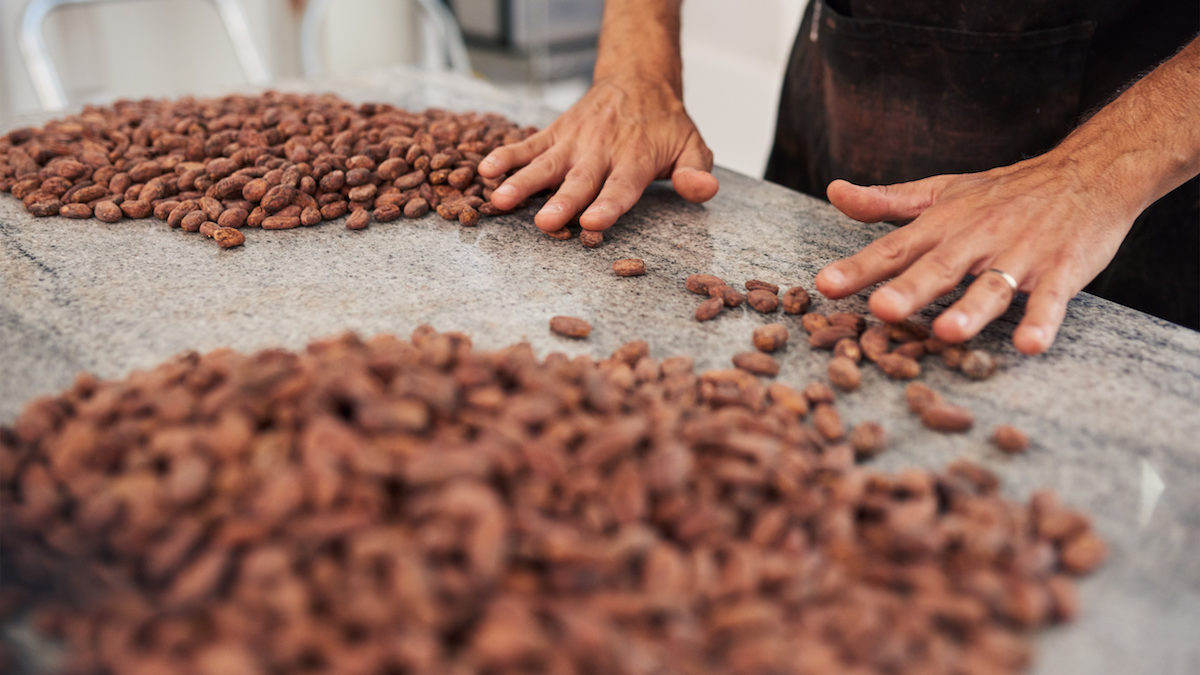Which Chocolate Is the Healthiest and Can Eating It Ever Be ‘Good for You’?

Chocolate is one of the most craved foods in the world. In the UK we eat an estimated 660,900 tonnes of it a year, which equates to about three bars a week per person. If the Statue of Liberty was made out of chocolate, we’d be collectively eating around 3,000 of her.
One of the reasons for our cravings is the release of endorphins when we eat chocolate. While the confection contains some compounds that can be associated with mood-lifting, such as phenylethylamine and the amino acid Tryptophan, the endorphins could simply come from eating something within the pleasure-inducing trio of fat, sugar and salt.
Eating junk food high in fat and sugar activates the pleasure centres in our brain you see. This explains why eating chocolate can feel addictive. Our brains are pleasure-seekers. We want to get results quickly with the least amount of effort, and by eating highly processed food, we get the big-win rewards of high calories and momentary pleasure with the least amount of effort (hello, fast food).
Now, we don’t need to go into why junk food isn’t healthy; for the most part, people know that. But what we are trying to highlight is the psychology behind it, and offer a token of recompense: you don’t have to shun the chocolate altogether. It’s important to realise not all chocolate is created equal and one type in particular could actually be ‘good for you’.
Here’s a breakdown then of the health benefits associated with chocolate and which type is the best for those with their health in mind.
Milk Chocolate? Not So Good
Dark chocolate has long been billed as the healthier alternative to it’s milky counterparts. Dark chocolate for example has triple the antioxidants than milk chocolate. Antioxidants are important as they can protect your body against the cell damage that free radicals cause, known as oxidative stress.
A 2003 study showed that when you eat dark chocolate you get a spike in antioxidant power in your blood stream within the hour. With milk chocolate, you get none.
Milk as a compound is known to influence the antioxidant capacity in our blood. There’s actually some evidence to suggest the antioxidant effects of the cocoa bean is potentially weakened in the blood when milk is consumed with them. The addition of milk (either in your stomach or in the chocolate itself) also inhibits the absorption into the bloodstream of beneficial phytonutrients contained within the bean.
Is Dark Chocolate Good For You?
While dark chocolate is certainly better than milk, be careful not to be deceived into thinking it’s a health food.
Even though studies do show dark chocolate may have some health benefits, including improved blood flow and several anti-inflammatory properties, dark chocolate still contains fat and sugar.
The fat comes from saturated cacao butter, which also happens to be one of the few plant fats that has been shown to raise your cholesterol. So if your cholesterol is high you may want to be extra cautious.
And we know refined white sugar isn’t great for us either, especially in its links to diabetes and the impairment of proper functioning in your arteries. Not all sugars are the same – coconut sugar for example would be a marginally healthier option, as it retains more vitamins and minerals than refined sugar.
Some dark chocolate bars will still contain milk as well, which as we’ve previously seen can nullify the effects of cacao, so do remember to take a look at the ingredients on the back before buying.
The Best Form Of Chocolate For Your Health
If you’re going to have chocolate, the healthiest option would be pure cacao or cocoa powder.
Cocoa powder comes from cocoa beans that grow in pods on the cacao tree. The beans are fermented, dried, roasted, and cracked and the resulting nibs are ground to extract about 75 percent of the cocoa butter our of the mixture, leaving a dark brown paste called chocolate liquor. After drying again, the mass is ground into powder to make unsweetened cocoa powder.
Cacao in contrast tends to refer to anything before the process of pressing the fat out of the beans, the most commonly sold and eaten being cacao nibs. Both contain no added sugar. You can even buy and eat cacao beans raw. As they’re a form of seed along with whole grains, nuts, legumes & coffee beans, they are highly rich in minerals, vitamins, and bioactive phytochemicals the plant uses to protect its DNA from oxidative stress (which in turn, have a protective or antioxidant effect for us too).

Choose unprocessed, ideally raw cacao or cocoa powder. Bitter is better, as it suggests a high number of flavanols, the main phytonutrient in the cacao bean. This is usually processed out exactly because of that bitterness, makers mixing in alkali during manufacturing to destroy the flavanols (the slang term for this is ‘dutching’). This is bad as you’ll see, as most of the unique benefits of consuming cacao come from these flavanols.
If you want to go for a chocolate bar, try to go for a higher percentage of cacao, the best being those labelled as organic. Now we’ve settled on which is best, here’s some studies presenting the myriad of benefits.
One thing to bear in mind is the amount of studies on chocolate that are funded by the industry. Evidence suggests that industry funding is associated with pro-industry conclusions, restrictions on the publication of negative results and delayed publication. On the other hand, one of the only systematic review of studies on chocolate and cardiovascular health that removed research funded by the chocolate industry, found the removal did not alter the observed positive effects. Our take? Proceed with confident caution.
The Benefits Of Cocoa and Cacao
Blood Pressure
The flavanols in dark chocolate stimulate nitric oxide production in the body, which causes blood vessels to widen improving blood flow and lowering your blood pressure with it.
A 2015 study for example investigated the effects of chocolate consumption in 60 people with type 2 diabetes and high blood pressure. The researchers found that participants who ate 25g of dark chocolate daily for eight weeks had significantly lower blood pressure than those who ate the same quantity of white chocolate.
The Brain
A study from the University of Nottingham evaluated the relationship between cerebral blood flow and a single acute dose of flavanol-rich cocoa and showed that cocoa can increase the cerebral blood flow to grey matter, suggesting the potential of cocoa flavanols for treatment of vascular impairment including dementia.
Research from University of L’Aquila, also linked the regular consumption of cocoa flavanols to improved cognitive function in elderly subjects with mild cognitive impairment.
Heart Disease
The flavonoids in cacao beans, when found in cacao powder have been found to be beneficial for a number of chronic disease conditions including heart disease.
In a study of 470 elderly men, cocao was found to reduce the risk of death from heart disease by a massive 50 percent over a 15 year period, while another study showed that eating dark chocolate more than five times per week lowered the risk of heart disease by 57 percent.
Cardiovascular Disease
A 2013 study from the Carlos III Health Institute in Madrid, found the consumption of seeds to have a profound effect on lowering the risk of cardiovascular disease.
Skin
The misconception is that chocolate and bad skin go hand in hand. But if you take the fat and sugar out, then there could be some benefits.
Flavonols you see can protect against sun damage, improve blood flow to the skin and increase skin density and hydration. A study from Witten/Herdecke University, found that the minimum amount of UVB rays required to cause redness in the skin a day after sun exposure, more than doubled in the participants who had consumed dark chocolate.
Form’s chocolate peanut, tiramisu and chocolate salted caramel flavoured protein powders are all made using fat-reduced cocoa powder.


















